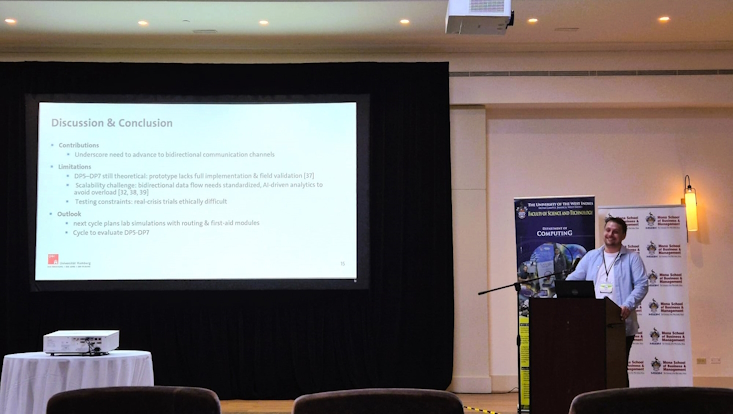Final Presentation of the Internship Seminar Data-driven Solutions for the Smart City Hamburg
12 February 2025, by Marten Borchers
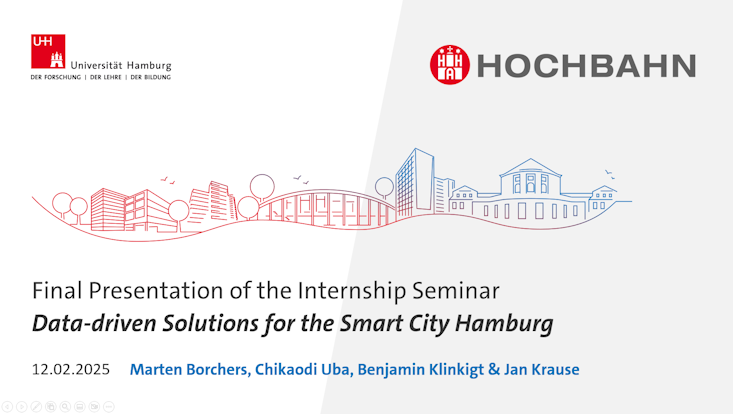
Photo: UHH
The final event of the teaching format Data-driven Solutions for the Smart City Hamburg, which is carried out together with Hamburger Hochbahn AG, took place at the University of Hamburg on February 12.
The teaching format aims to enable students to work on practical use cases to promote innovation and skills. To this end, the students worked together with the Marketing department, represented by Michaela Krüger, the Transport Management department, represented by Mirko Ludewig, and HOCHBAHN U5 Projekt GmbH, represented by Jan Hendrik Schmidt.
The group of students with Jolie Bast, Nicole Jun, Maximilian Hövelmann, and Eduard Schütz, together with Michaela Krüger, investigated whether and how an AI-based avatar can be used as a personalizable mobile mobility companion can be used. To this end, a web prototype was developed that accepts text and voice input and can provide information about the timetable, known timetable, and known disruptions. In addition, relevant routes and restrictions can be stored, allowing the avatar to serve as a mobility assistant.
In a collaboration between Jeremiah Stüve, Dennis Ott, Kevin Heuer, and Jan Hendrik Schmidt, Schmidt investigated how AI-based avatars can be used in future subway stations. In addition to providing information about the timetable, tickets, and possible delays, they also, in particular, explain how the avatar can use a spatial model to guide people to navigate unerringly through the station and communicate links to public maps using QR codes.
The group with Ksenia Valyshikina, Ani Nahapetyan, Florian Schleid and Thore Schönfeld, together with Mirko Ludewig, investigated whether and how the influence of small and medium-sized events on passenger volumes in bus operations can be predicted. The focus was on line 5, and data from different sources were analyzed and processed in different ways to train several machine learning models. The predictions were compared with each other and with the real passenger volume to test the influences of individual data points and processing variants. to test the influences of individual data points and processing variants. Chikaodi Uba, Jan Krause, Benjamin Klinkigt, Eva Bittner and I are delighted with the successful completion of the teaching format, the prototypes developed prototypes and the discussions.
A big thank you to all the students, without whom this would not have been possible, as would the HOCHBAHN and all the guests. We are looking forward to further cooperation and support to shape learning and teaching on and with real real challenges and at the same time provide impetus for innovation. innovations.
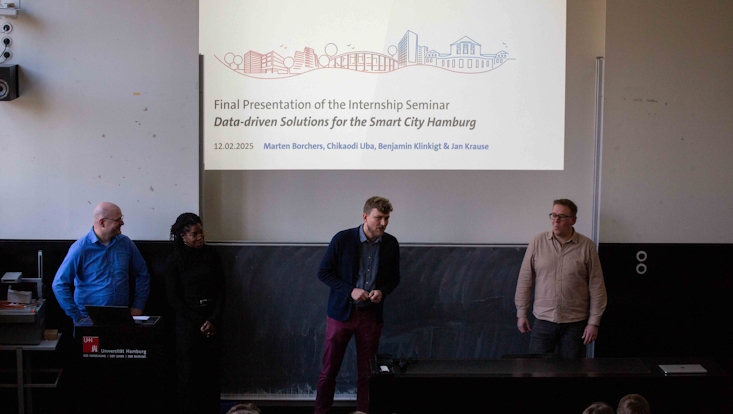 |
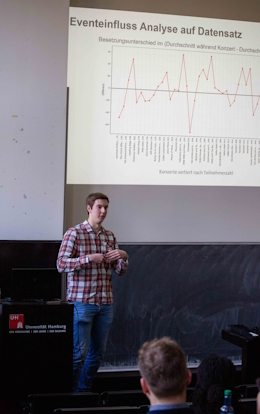 |
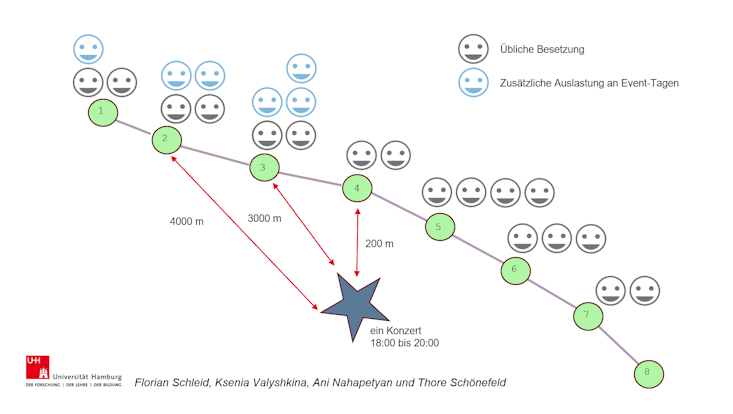 |
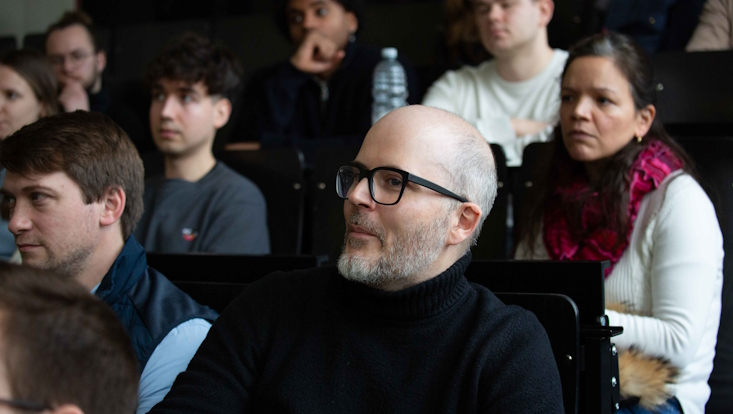 |
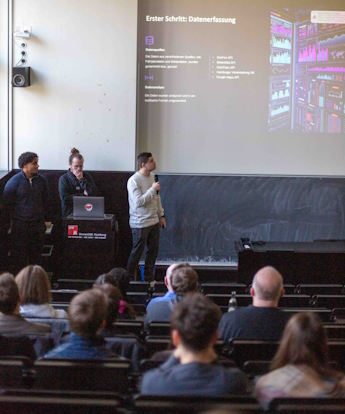 |
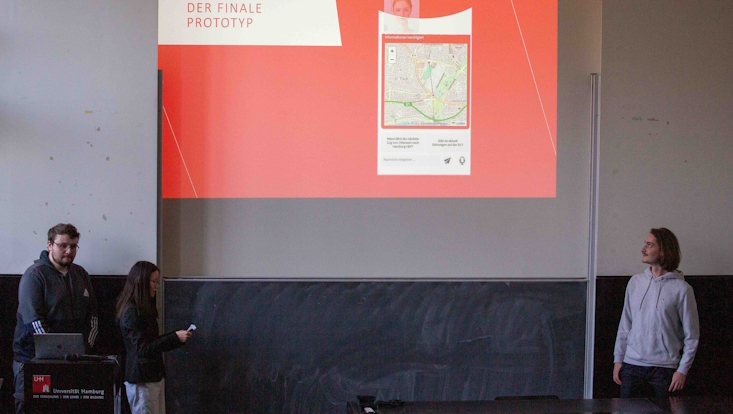 |
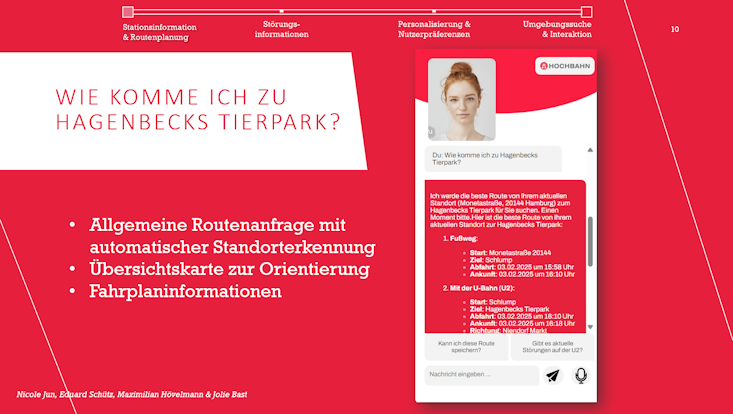 |
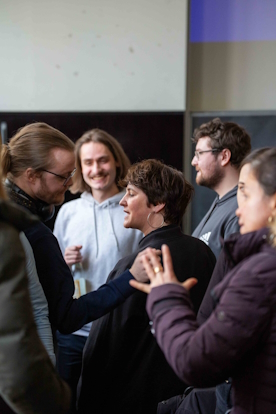 |
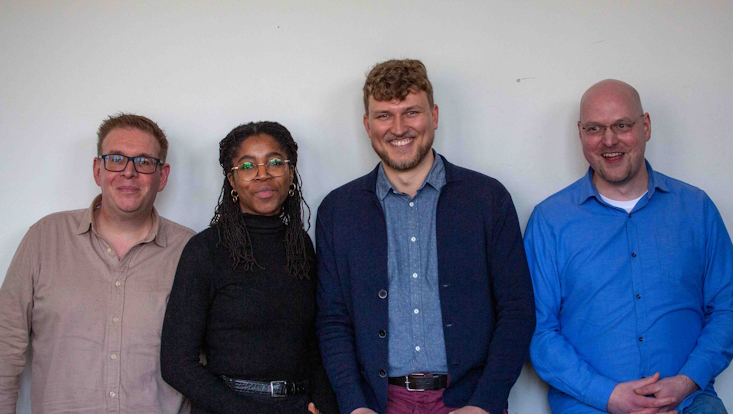 |

